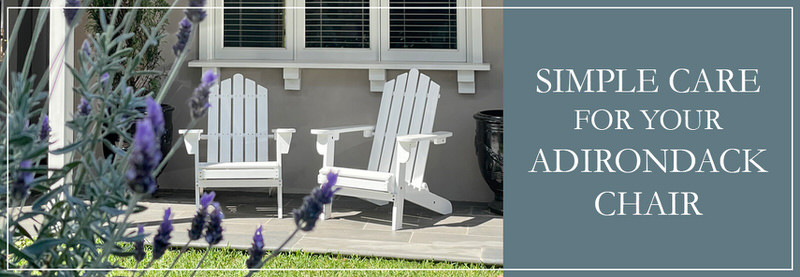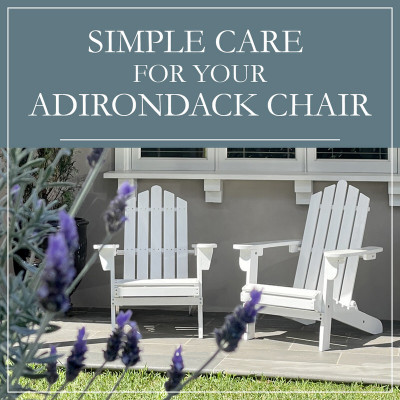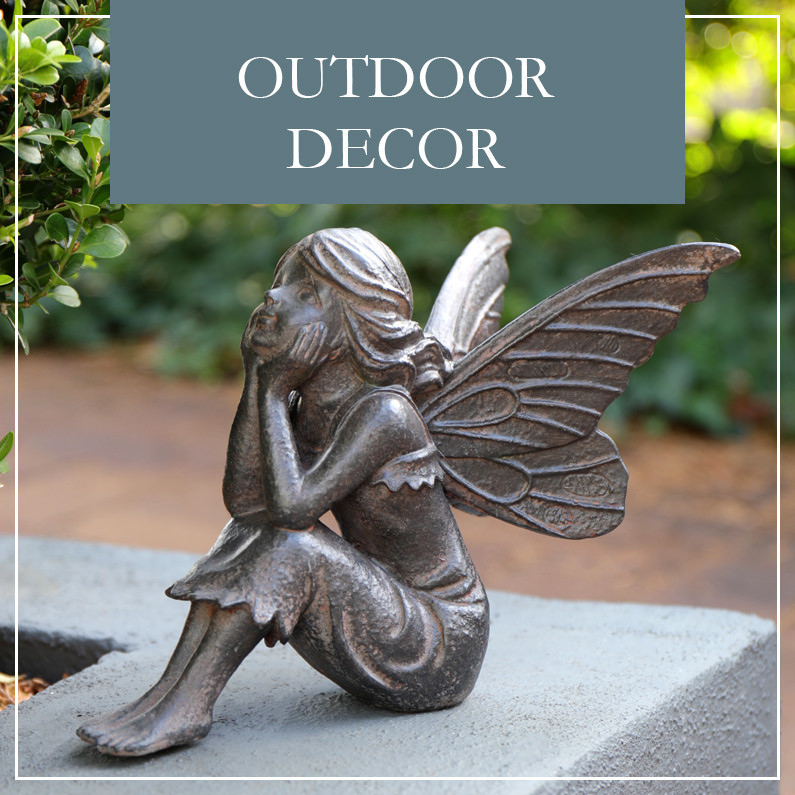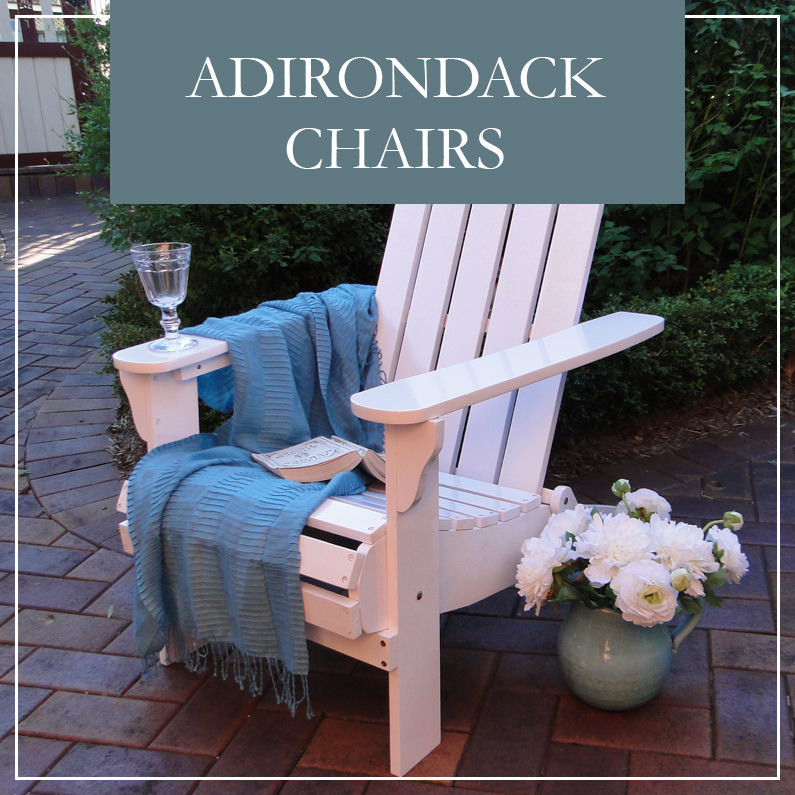Simple Steps to Care for Adirondack Chairs
With their classic design and inviting appearance, traditional Adirondack chairs are a popular choice for outdoor seating, especially in spaces designed in the Hamptons style. However, to keep them looking their best and to extend their life, a proper care routine is essential. Whether your chairs are nestled on the porch or by the poolside, here's how you can ensure they stand the test of time.
Clean Your Chairs Regularly
The first step in caring for your Adirondack chairs is a simple clean. Dust, pollen, and other outdoor elements can accumulate, so a thorough wipe-down with a damp cloth should be part of your regular maintenance routine. A mixture of mild dish soap and water will do the trick, however wooden chairs might need a bit more attention with a soft brush to get into the crevices.
Dealing with Weather
Weather can be the biggest adversary for outdoor furniture. If you have wooden Adirondack chairs, it's wise to store them in a shed, garage, or under cover during extreme weather and storms, in order to prevent any damage. Ideally, Adirondack chairs should be placed in an area with some shade cover, as over many years the sun may fade the paint or the wood finish slightly.
Preserving Your Wood
Adirondack Chairs If you have wooden Adirondack chairs, they'll need to be treated annually to maintain their integrity and appearance. Depending on the type of wood, you might need to apply a wood sealant or protective oil or wax, such as linseed oil. Use a brush to apply the coating, or buff in wax with a soft cloth. Allow the timber to fully dry, then apply a second coat if required. These treatments help to repel water and reduce the risk of rotting, warping, or fading.
Stain or Paint Touch-ups
Chips and scratches can happen to your Adirondack chairs, especially with active use. Keeping a touch-up kit with matching stain or paint can quickly address these blemishes, keeping your chairs looking fresh. This is particularly important for chairs styled in the Hamptons aesthetic, where appearances are pristine and polished.
Checking for Repairs
Inspect your chairs regularly for any loose screws or small cracks that may develop over time. Tighten any loose fittings and fill minor cracks with wood filler, then sand back the excess and apply sealant or paint. Addressing these issues promptly can prevent them from becoming more significant problems later on.
Protecting Adirondack Chairs from Pests
In Australia, outdoor furniture can sometimes attract unwanted attention from pests. Regularly check your wooden chairs for signs of termites or other wood-loving insects. If you spot any, treat the area immediately with an appropriate pesticide or seek assistance from a pest control professional.
Sun Protection
Just like our skin, Adirondack chairs can suffer from too much sun exposure. If your chairs are painted or stained, UV-resistant sealants can help prevent the colour from fading. Fading colour is less noticeable of an issue for paler colours such as cream or white. For those who prefer a natural wood look, choose a sealant with UV protection to keep the wood from greying.
Avoiding Ground Moisture
Keeping wooden chairs directly on grass can expose them to moisture and insects. Using chair glides or stands to elevate them slightly off the ground can help keep the legs dry and prolong their lifespan. If your wood Adirondack chairs are on a deck or paved area, move them away from any puddles that have formed after rain, as standing in puddles for too long may encourage moisture damage and mould growth.
Caring for Outdoor Cushions
For those who add cushions to their Adirondack chairs for extra comfort, remember that cushion care is just as important. Most outdoor cushions are designed to be weather-resistant, but they should still be stored away when not in use to keep them clean and reduce wear and tear. Occasionally wash the cushion covers in water to remove any dirt, or simply do spot-treatments with a wet sponge or cloth on cushions made from water-resistant fabric.
Mould and Mildew Management
In humid climates, mould and mildew can be a problem. If you notice any spots, treat them promptly with a solution of one part bleach to four parts water, applied with a soft cloth. A solution of one part vinegar to one part water is a natural alternative to bleach, and a great choice for painted Adirondack chairs as unlike bleach, vinegar does not damage paint. Remember to always wear protective gloves and rinse the area well after treatment.
Protect with Furniture Covers
When not in use, especially over the winter months, consider covering your Adirondack chairs with specially designed weather-proof furniture covers. These protect against rain, dust, and bird droppings, keeping your chairs in top condition.
Adirondack Chair End-of-Season Care
As the outdoor season winds down, give your chairs a thorough inspection and clean. This end-of-season care can include a final stain or sealant application, ensuring they are ready to face the elements until the warmer months roll around again.
A Personal Touch
Customising your Adirondack chairs can make maintenance feel less like a chore. Choose colours and finishes that you love, and you'll find joy in keeping them vibrant and alive. After all, these chairs are an extension of your living space and should reflect the care and attention you give to your home.
Caring for Adirondack chairs requires a bit of effort, but the payoff is well worth it. With these simple steps, your chairs will continue to offer a cosy spot for relaxation and add a touch of Hamptons elegance to your outdoor area for many years to come. Whether they're stationed on a verandah overlooking the sea or in a suburban backyard, a well-maintained Adirondack chair is a welcoming sight in any Australian home.





